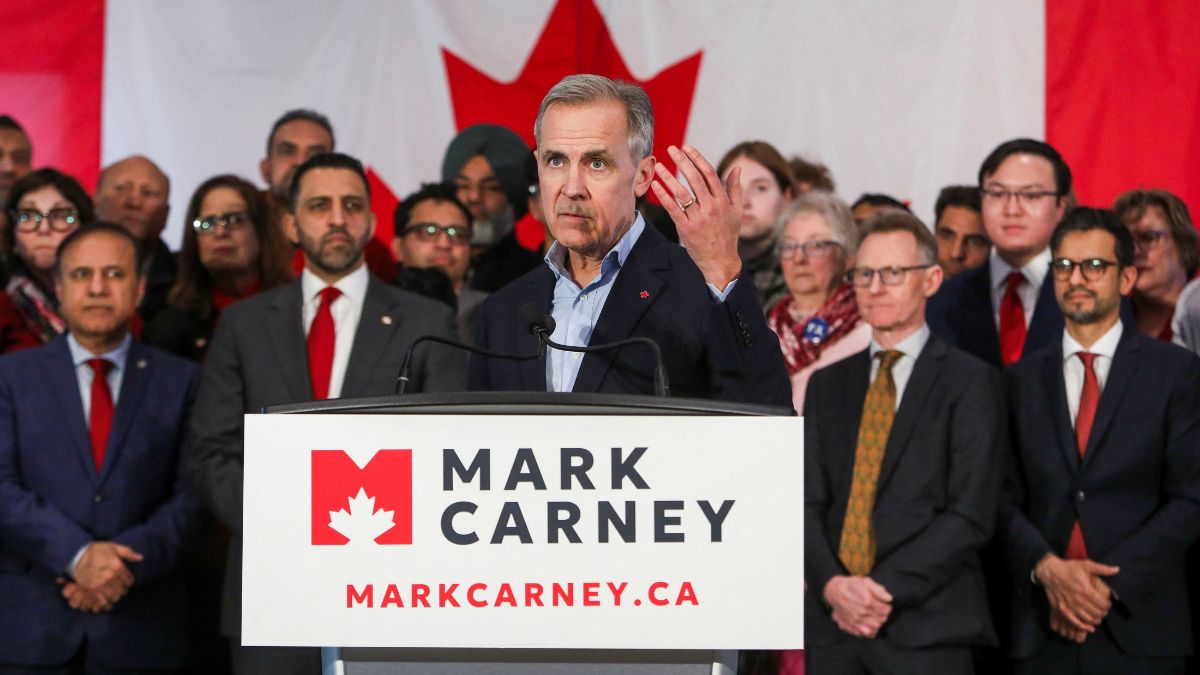Mark Carney, a highly regarded economist and former central banker, has officially announced his candidacy to replace Justin Trudeau as leader of Canada’s Liberal Party.
If successful, Carney could become Canada’s next prime minister, albeit briefly, given the minority government’s precarious position.
Carney is known globally for his roles as the governor of the Bank of Canada and later the Bank of England.
Carney, 59, launched his campaign in Edmonton, Alberta, positioning himself as a political outsider despite years of close ties to the Trudeau government. “I have helped manage multiple crises and I have helped save two economies,” Carney said. “I know how business works, and I know how to make it work for you.” This marks his first foray into elected politics.
With his candidacy, he hopes to fill the void left by Justin Trudeau, who announced his resignation amid plummeting approval ratings and internal dissent within the Liberal Party.
Carney’s leadership bid comes as Canada faces pressing challenges, including rising inflation, growing income inequality, and climate change. At his campaign launch, Carney stated: “The prime minister and his team let their attention on the economy wander too often,” Carney said of Trudeau. “I won’t lose focus.”
While Carney is a political newcomer, his extensive career in finance and governance has positioned him as a formidable candidate.
His campaign centers on themes of economic stability, environmental sustainability, and social equity — issues he has championed throughout his professional life.
What we know about Mark Carney
Born on March 16, 1965, in Fort Smith, Northwest Territories, Carney grew up in Edmonton, Alberta. The son of a high school principal and an elementary school teacher, he credits his parents with instilling in him a strong work ethic and a commitment to public service.
Carney’s academic journey began at Harvard University, followed by advanced degrees from the University of Oxford. He spent 13 years at Goldman Sachs before transitioning to public service as deputy governor of the Bank of Canada in 2003.
In recent years, Carney has championed climate action, serving as the UN Special Envoy for Climate Action and Finance and co-chairing the Glasgow Financial Alliance for Net Zero (GFANZ). However, his advocacy for carbon pricing has drawn criticism from Conservative opponents, with Pierre Poilievre branding him “carbon tax Carney.”
Governor or Bank of Canada, Bank of England
In 2003, Carney transitioned to public service, joining the Bank of Canada as deputy governor. Five years later, he was appointed governor, becoming the youngest person to hold the position. His tenure coincided with the 2008 global financial crisis, during which he implemented bold measures to shield Canada’s economy.
Carney introduced an unprecedented policy of forward guidance, signaling the Bank of Canada’s commitment to keeping interest rates low to stimulate economic growth. This approach, combined with Canada’s relatively resilient banking sector, helped the country emerge from the crisis with minimal damage compared to other G7 nations.
His success in Canada caught the attention of global policymakers, leading to his appointment as the governor of the Bank of England in 2013.
As the first non-British governor in the institution’s history, Carney faced the dual challenges of managing the aftermath of the 2008 crisis and preparing the UK economy for Brexit.
During his seven-year tenure, Carney introduced significant reforms, including stress tests for banks and measures to promote financial stability. He also prioritised climate change, becoming a vocal advocate for incorporating environmental risks into financial decision-making.
Carney: The climate advocate
Carney has highlighted that Canada holds a “huge economic opportunity” in transitioning to a sustainable economy with lower carbon emissions. He advocates heeding the warnings of scientists who have long highlighted the dangers of climate change.
In a January 2025 interview with Jon Stewart, Carney pointed to the oil industry as a major contributor to Canada’s emissions, asserting that the focus should be on making the industry cleaner rather than requiring ordinary Canadians to alter their lifestyles.
Carney’s criticism & challenges
While Carney’s credentials are impressive, his entry into politics has not been without criticism. Opposition leader Pierre Poilievre and the Conservative Party have been quick to frame him as an extension of Justin Trudeau’s policies.
The Conservatives have labelled him “carbon-tax Carney,” referencing his support for carbon pricing as a tool to reduce emissions. Poilievre has argued that Carney’s approach would burden ordinary Canadians with higher costs, a claim Carney has disputed.
Carney has also faced scepticism about his lack of elected political experience. Critics question whether his technocratic background will resonate with voters, particularly in rural and working-class communities.
Can Carney become Canada’s next PM?
Carney’s main rival for the Liberal Party leadership is Chrystia Freeland, the former finance minister whose resignation last month triggered Trudeau’s departure. While Freeland is a seasoned political veteran, Carney is presenting himself as an outsider with a proven track record in crisis management.
However, the challenges ahead are daunting. The Liberal Party faces plummeting approval ratings, and opposition parties have vowed to bring down the minority government in a no-confidence vote scheduled for March 24.
If Carney wins the leadership race on March 9, he could become one of Canada’s shortest-serving prime ministers, with an election anticipated in the spring.
Carney’s campaign has received endorsements from several prominent Liberal MPs and business leaders, who view him as the candidate best equipped to address Canada’s economic challenges.
Also Watch:
With inputs from agencies
)